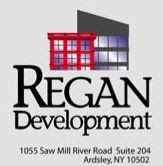The Port Authority of New York & New Jersey—the landowner investing $11-billion in the project—is responsible for the entire site. This work includes the agency's own projects: the $3.4-billion World Trade Center Transportation Hub, the $3.2-billion 1 WTC, the WTC Vehicle Screening Center and the shared WTC infrastructure and utilities, among them.
The hub and the office buildings flank the complex's heart and soul: the $700-million National September 11th Memorial and Museum. The local Lend Lease is building the memorial and museum. Currently, all other project teams are standing aside so that 80% of the eight-acre memorial will be able to open on Sept. 11.
The building team for the eight-acre urban park of the $700-million National September 11 Memorial & Museum—the emotional focal point of the $19-billion World Trade Center redevelopment in Lower Manhattan—is obsessed with something as mundane as surfaces: ground, water, stone and metal.
But the team has a huge burden on its shoulders, one that goes deep down. In the hubbub of activity at the 16-acre WTC site, crews have to deliver 80% of the structured park—a giant green roof topping the site's five-level basement— in pristine condition for the looming Sept. 11 ceremonies marking the 10th anniversary of 9/11.
The memorial team is giving extra-special care to the heart and soul of the project: the 2,983 names of the 9/11 victims etched into the surface of bronze-covered parapets bordering each of the memorial's pools. The pools—each of which is 31,264 sq ft and contains 485,919 gallons of water—are set into the footprints of the original 110-story Twin Towers, destroyed by the terrorists.
While each pool has a pumping system powerful enough to recycle 52,000 gallons of water per minute, it is the surface of the nearly 1,600 lineal ft of parapets that had to be robust enough to withstand rain, scorching heat, snow and ice as well as the wear and tear of three million annual visitors. For the comfort of the millions of hands that will touch the etchings, the parapets have a heating and cooling system.
Go to ENR to read more on the 9/11 memorial.
Showing posts with label enr. Show all posts
Showing posts with label enr. Show all posts
Tuesday, September 6, 2011
Thursday, January 27, 2011
VERY Tall Building!

Frame's Monitoring Program Confirms Design Assumption
by Nadine M. Post for ENR.com
An extensive program to survey and monitor the structural behavior and dynamic responses of the world’s tallest structure—the 828-meter Burj Khalifa in Dubai—has done more than validate the structural engineer’s design concepts. It could help improve future supertowers, says the keeper of the program. The monitoring system, which includes myriad sensors, will become a model for assessing critical and essential facilities, predicts Ahmad Abdelrazaq, an executive vice president of Samsung C&T Corp., Seoul, the burj’s lead builder.
The program “has given us information that will improve design for tall buildings and hopefully improve future structural systems [that use] new and more advanced materials,” says Abdelrazaq, a former structural engineer in the Chicago office of the burj’s design architect-engineer, Skidmore, Owings & Merrill. It will also give the owner information on the structural behavior under environmental conditions. That will allow better decisions about building operations, he adds.
Based on the behavior under lateral loads of the burj, a mostly concrete structure with a steel pinnacle, Abdelrazaq predicts that in generations to come, designers will be able to provide better-performing tall buildings that use less framing material.

The engineer also expects survey and monitoring programs to, over time, become an integral part of building design and “intelligent” building management systems, thanks to advances in computer technologies, fiber optic sensors, nanotechnology, dynamic monitoring devices, new global positioning system technologies and wireless monitoring techniques.
Dennis C.K. Poon, a managing principal of Thornton Tomasetti, New York City, which designed the world’s second-tallest building, the 508-m Taipei 101, agrees that the information from the burj’s program is beneficial to serve as a good reference for design criteria or assumptions for supertower design.
But, he says owners are often reluctant to install monitoring systems because of initial and operating costs. They are also often reluctant to share data, says Poon.
Measurements to date show the burj performing better than predicted for all building systems, at least during low-amplitude wind and seismic events, says Abdelrazaq. “We will continue monitoring all building components and examine all the assumptions made for analysis, design and construction for years to come.” He says performance data will be available to the design community.
During construction, the program gave immediate feedback regarding material strength, durability, elastic modulus, creep and shrinkage characteristics, total strain as a function of time, heat of hydration, cooling of the massive members and more. Post-construction data and details are also available on creep, shrinkage and foundation stiffness and dissipation of loads into the foundation system. This is important because the data could impact actual dynamic building stiffness and overall properties that must be considered in supertall buildings, says Abdelrazaq.
The program also gives feedback on tower acceleration since the completion of the building, which is currently being correlated to the predicted acceleration. This will allow an examination of basic assumptions made in wind tunnel tests and confirm whether present practice needs reexamination, says Abdelrazaq.
Assumptions during design about vortex shedding and damping under different wind and seismic events have been validated by the monitoring project. Feedback on the performance of the building’s steel pinnacle is also important to future design assumptions, especially regarding fatigue, says the engineer.
Calling the program “impressive,” John D. Hooper, a principal of structural firm Magnusson Klemencic Associates, Seattle, says it is not clear how the results will be directly applicable to other supertall buildings, given the burj’s unique configuration, height, structure and construction sequence. “The program’s apparent success does suggest that these efforts are valuable and should be considered for tall and unique structures,” he adds.
Labels:
burj khalifa,
enr,
supertall buildings
Subscribe to:
Posts (Atom)








